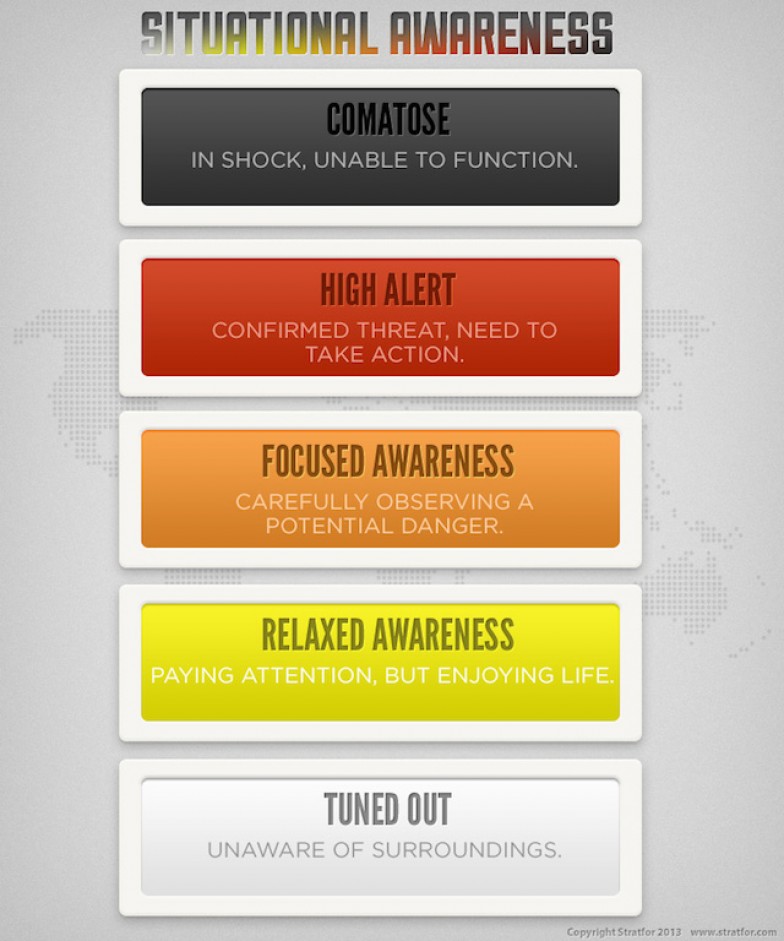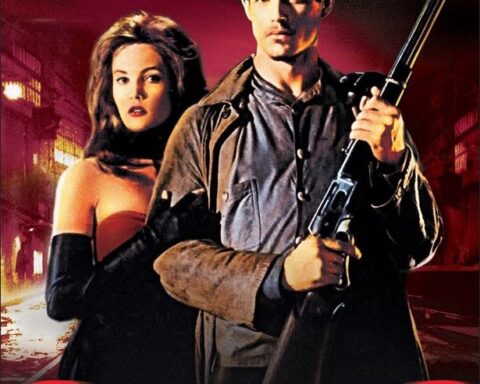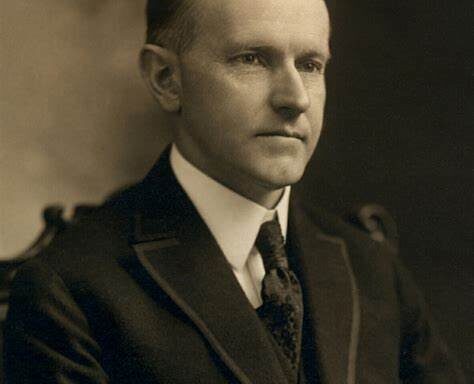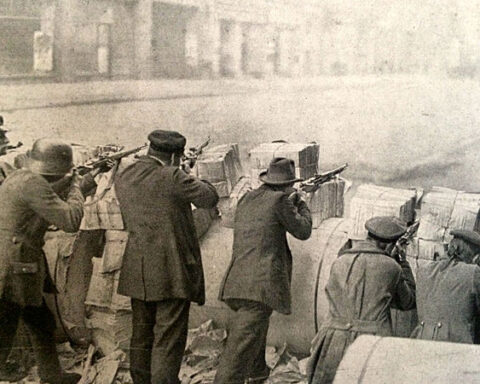Editor’s Note: Lector asked a buddy to write up something on situational awareness. This is long, and it is full of good material. Take your time and digest it. This is valuable information.
My professional background is in bar, nightclub, and concert security. Contrary to what could be considered common knowledge, security work does not revolve around kicking someone’s ass. The number one aspect of this type of work is safety, with liabilities reduction coming in at a very close second. A lot of times there’s little to no overlap between the two. This isn’t nanny-state, helicopter-mom, pad-all-the-corners-on-your-tables safety. It’s the over-seeing, controlling, and managing of anywhere from a dozen to tens of thousands of fans and upwards of two dozens employees, plus creating and maintaining an environment to reduce as many liabilities as possible kind of safety. As obvious as this may seem, you can’t proficiently do this type of work standing around with your head up your ass.
The development of situational awareness is crucial if you intend to do your job in a professional manner. Unlike a lot of job skills that have no transferability to everyday life, the development of personal situational awareness is something everyone can use every day at any moment in the day. Car accidents, personal injuries, fires, robberies, beatings, rapes, and murders happen every day to people who are simply not paying attention to what they or anyone else around them are doing. This is self-evident enough to most readers of this blog, but the actual implementation of these practices can leave you a little lost when you’re teaching yourself. Though I’ve never served in any military capacity or any official law enforcement role, I’ve been lucky enough to have a wealth of knowledge at my disposal from SF Soldiers who served in operations from Mogadishu in 1993 to the Shahikot in 2002, Recon Marines who served in operations from Fallujah in 2004 to the Sangin Valley in 2010, SWAT and narcotics officers across multiple departments, and long-term nightclub security workers who have passed along tips and advice other the last 8 years. So with that said, here are some of my personal thoughts on the process of developing and honing your own situational awareness.
It helps to have a working definition. Dr Mica Endsley, the current Chief Scientist for the U.S. Air Force, has been researching and writing on situational awareness (SA) since the late 80s and the working definition she used in her 1995 paper, Toward a Theory of Situational Awareness in Dynamic Systems works quite well: “the perception of the elements within a volume of time and space, the comprehension of their meaning, and the projection of their status in the near future” (p36). While that definition works for research and academic purposes, I firmly believe that it ignores one crucial aspect of real life: You. What I feel is a better definition is one that I picked up from an old SF Soldier years ago defining SA as the state of awareness of yourself, what’s around you, and the consequences of both yours and others’ actions. In any interaction with others, consider the following four point:
Who’s there? How many are around? What is their background?
What behaviors can you expect from them?
How will your presence and/or interaction affect that behavior?
What are your personal limitations in dealing with them?
Consider the currently on-going case State of Florida vs Curtis Reeves and compare the actions of both parties with those four points. Neither party made any effort to take a few seconds and observe who they were dealing with- a cranky, smart-ass old man and a tall, cocky, smart-ass middle-aged man-, what behaviors the other was likely to exhibit, how the other was likely to react to provocation, and what the consequences of their continued dick-measuring could be. In short, both parties showed a complete lack of sense and totally piss-poor SA.

Now contrast that with the actions of Samuel Williams in response to the robbery at the internet cafe he was at on July 13, 2012. He saw two young black males, both armed, rightly assumed the possibility of personal harm when they began destroying equipment, then without any warning or attempts to subdue them began firing. I can’t speak for Mr Williams, but I can assume that he was operating under the assumption that attracting attention to himself might get him killed due to his age and physical capabilities and that maintaining the element of surprise would best serve him and the rest of the patrons. I would say that his marksmanship notwithstanding, Mr Williams did an outstanding job and utilized excellent SA for an untrained elderly man.
So what can you do to work on your own SA? One of the best places to start at this point is recognizing your own cognitive limitations utilizing some basic facts and principles from the field of Cognitive Psychology. This is a very basic run down of principles and issues related to cognitive processing so by no means will this be fluid or comprehensive. It will, however, give you a reasonable and basic level of knowledge and understanding of the mental processes behind what we can consider to be the broader application of situational awareness.
Cognitive Processes can be broken down into 2 main functions: 1) Working Memory/Short-Term Store, and 2) Long-term Store. Working Memory/Short-Term Store is, generally speaking, the immediate sensory inputs we recognize and keep in mind. Long-term store are those inputs we recognize as important and are able to encode into our long-term memory. We are constantly and unconsciously perceiving all sorts of sensory inputs: touch sensations, sounds, smells, sights, and tastes. If we tried to consciously recognize all of them our processes would jam up in a heart beat. The currently-accepted theory of sensory processing is the Working Memory Model (Baddeley and Hitch, 1974), which was updated in 2000 to include a specific component they called the “episodic buffer” that ties sensory streams together to form the singular episode that gets encoded into our Long-Term Store as a memory. The way this works is that we have a filter of sorts that narrows down what we should consider to be important sensory inputs and disregards mundane, repetitive, and unimportant inputs. Studies into the “cocktail party effect” show that this is unconscious. Think back to a moment where you’ve picked up on someone saying your name at a low volume in a loud room and you have an example of those executive functions at work. Those sensory inputs then move into our Working Memory, which has a general time limit of 15-30 seconds and a capacity of varying amounts from 3 +/- 1 up to 7 +/- 2 items, depending on the kind of item, any interference of new inputs, and strategies used to remember them. Again, those details deemed important move into our LTS while the mundane details are disregarded.
What this comes down to on the functional level is that our minds recognize what it considers to be “novel events”. The Weapons Focus Effect is based on Easterbrook’s studies into emotional arousal narrowing perception fields into what we might call tunnel vision at the expense of peripheral details (1959). Research by Kramer, Buckhout, & Eugenio (1990) showed that the type of object held by a person (either a magazine or a large knife) in a non-threatening environment significantly affected the ability to recall details about the person holding the object. Those viewing the person with the knife remembered far fewer details than those who viewed a person walking with a magazine. Finally, the info dump is becoming practical.
To give a real life example, recently at an event I was working a man went into cardiac arrest. I was working a large area and didn’t notice the initial fall and crowd movement due to the fact that nothing about it stood out: people were standing, moving, and sitting by the dozens at any given second. However, the Paramedic running definitely caught my attention and I followed his direction of travel up the path to see a person doing chest compressions. I remember nothing about jumping a barricade and sprinting a hundred yards. Novel event vs mundane event. Although I was the 2nd person on scene, the Paramedic already had the AED diodes attached so I spent the next 30 seconds clearing back the on-lookers to make a space for the next-responding Medics and gathering my thoughts for as detailed of a radio call as I could give to the directors (right/left side, row location, distance inside the row, current actions, directions to subordinate workers, etc). I can’t tell you one single thing about the appearance of the patron who initiated CPR before the Medic got there, but I can still vividly see the man’s chest responding to the AED pulses and the foam coming out of his mouth. Novel event vs perceived mundane event.
So, then, what I would consider to be the most important part of developing your SA is to scan as much as possible with the caveat that you can’t possibly notice everything and something you thought was mundane might be important later. That’s just the way it goes. The next person you see, look them over from the top of their head to the bottom of their shoes. Look at their eyes, their facial expression, their waist-line, their pockets, and their feet. As soon as you walk into a room, scan immediately in front of you, then from one side to the other. The amount of information is overwhelming, right? So what’s important?
MSG Paul Howe (US Army, Ret) gives an excellent piece of advice on this in his book, Leadership and Training for the Fight. When you’re standing in the middle of an empty street in an urban combat area, the threat obviously won’t come from your front: there’s nobody there. Don’t waste your time scanning large, open, empty areas; focus on windows, doorways, behind cars, fence lines, and any other areas that might obscure a shooter. Scan deep into the high threat areas, then bring it back wide to the full picture, then re-scan the high threat areas again. The same goes for individuals. Don’t waste your time staring at a guy’s sternum or the back of his legs. Look at his face for behavioral cues, his waist-line for pistols or fixed-blade knives, his pocket seams for folding knives, and his feet for the type of footwear he’s wearing. A man starting a fight in flip-flops is at a severe disadvantage and a man wearing steel-toed work boots out to dinner might have kicking you in the stomach in the back of his mind.
What is his appearance like? Is he well dressed? Is he composed? Is he with a group of males or with his family? Is he obviously intoxicated as indicated by staggering, a flushed face, blood-shot eyes, fidgeting, dilated pupils, or furtive movements? Is he tattooed? What kinds tattoos are visible? What areas of his body are tattooed? Face, neck, and knuckle tattoos are pretty good indicators that the person you’re looking at doesn’t give two fucks. He could also be the most solid guy in the room, though. Between a guy with face tattoos and a guy who looks like he’s a social coordinator for a fraternity, which one might you want to be more concerned about bumping into without apologizing? Which one might you consider avoiding all-together? This goes straight back into awareness of how your own actions affect others around you.What room are you walking into? An office or business of some sort? A bar or nightclub? A house with people you don’t know well? Where are the exits? How many people (roughly speaking) are there? What is the mood like? Is everyone quietly talking and enjoying the company? Is the music obnoxiously loud and everyone obnoxiously drunk? What ages are they? Are people grouped together or mingling individually? Is one group more dominant or rowdy than the others? Using the above paragraph as a guide, what is the appearance of a rowdier group? Do they look like they’re the type to keep to themselves or do they look like a group of guys out to start shit for fun?
It’s overwhelming, right? So let’s take this one step further. What’s out of place? If you’re walking into a speakeasy full of Millennial hipsters wearing button-up plaid shirts, are you really concerned about the pocket knife clipped onto one of their back pockets (which should be on the right side about 90% of the time, given population norms)? No. You shouldn’t be, anyways. But the guy who walks in with a full-size Ka-Bar on his belt? Take a few extra seconds and check out his body language and who he’s there to see. Is the guy with knuckle tattoos at a bar frequented by college-aged kids or is he at a hot-rod car show? The guy hanging out at the front entrance to a retail store who isn’t smoking or on the phone…what’s he doing? Why isn’t he going inside or leaving like everyone else? Is he waiting for his ride to pick him up, or is he waiting for an easy mark to walk up to purse snatch? The house two blocks down you pass on your way to work every day normally has a beat-up sedan in the drive way, but this afternoon there’s $100k of ghetto-cruisers parked there. Is this significant? How do you know if you’ve never paid attention to see what “normal” is? The guy in your store asking distracting questions and touching a million things but not showing any interest in buying them isn’t acting like a normal customer. Why is he doing that? Has he spent all of his time walking around racks that obscure your vision of him?
All of those things are super, super simple to spot and don’t require much in the way of cognitive processes at all. Do it enough and seeing a knife on someone’s pocket becomes automatic. You start staring at bulges on a hip covered by shirts to see if it’s a gun or a phone before you even realize you’ve noticed an unusual object on the waistline. You go about your business at the store when your instincts start to tell you that something about that guy’s behavior isn’t right. His movement history doesn’t line up with that of what you know to be the average shopper. The man posted up at the front entrance doesn’t specifically look like an opiate junkie, but something about his abnormal behavior rings an alarm bell. Without taking two seconds to pay attention to them and recognize out-of-place, “novel” events or people, how do you know what you’re walking into or dealing with?
Developing this mindset is a slow and methodical process. There’s plenty that you can do by yourself. In addition to the constant scanning and normative comparisons, visualize, visualize, visualize. Plan ahead of time and develop simple strategies. I had a young black guy wearing a red watch cap, a red sweater, with a red bandanna hanging out of his back pocket run up to my car asking for a smoke at 3:30am after leaving work in an middle-class, white area. After the details of the Christian-Newsom murders were released, many of us who knew their friends or family members put those details into our own planning processes. When a shady guy approached my car late at night on an empty street, I had thought through that several times before and the decision to simply run the red light was automatic.
Once you develop a response, practice it. Practice it to the point that your motor skills are automatic. Our cognitive processes are generally known under two systems; System 1 encompasses the fast, automatic, rehearsed responses to stimulus while System 2 is the slow, methodical, analytical though process. The scanning processes I talked through above are under System 2. You see a group of young black men in an area known for drug trafficking late at night and methodically and logically decide to double back and call a cab to pick you up instead of walking home. System 1 is where prior preparation, training, and visualization come into play. For example, using the mirrors on an ATM to pay attention to the man behind you in line, you see him pull his shirt up and uncover the grip of a pistol he intends to use to rob you. Your fight-or-flight response kicks in and spin around and push him to make distance, then reach for your own gun. However, you’ve not practiced much with the holster you chose to wear today and you’re reaching for a Serpa-style finger release on a holster that has a thumb snap. You haven’t practiced drawing from under your shirt and you fumble the draw when it catches on the fabric. Even worse, you haven’t practiced dry-firing in this scenario and you shoot through your hand extended in front of you because your two thoughts were disjointed and unconsciously acted on. That exact scenario happened to a State Trooper years ago- I wish I could remember which state and year right now- when he was fighting with a man trying to kill him, grabbed the guy by the back of his head with his weak hand, and fired point-black underneath the guy’s chin, which then passed through the guy’s skull and straight through his own hand. And due to the limitations on our cognitive processing resources, while you’re devoting valuable time to fixing your screw ups, what you’re NOT doing is focusing on your attacker. Visualize and practice.
I do hope that the information in this post is useful to you and your families. In the end, no matter what the gun grabbers, liberals, and different levels of government try to tell us, our protection is our own responsibility. To protect ourselves, we have to identify the threats. To identify, we have to notice. And to notice, we have to make the efforts to separate the good from the bad. Stay safe!










Well said. Valuable and accurate. Only minor quibble is the black level of SA. Redundant for practical purposes since oblivious is oblivious. I prefer to keep it simpler with col. cooper’s original (without the black). Only value is see to addition of black is assessing others’ SA as part of your own SA/threat assessment. But, as I said, minor quibble. Well done.
Lot of ego bullshit. SA from a bouncer? Stay away and stay alert in crowds, use common sense and FOCUS.